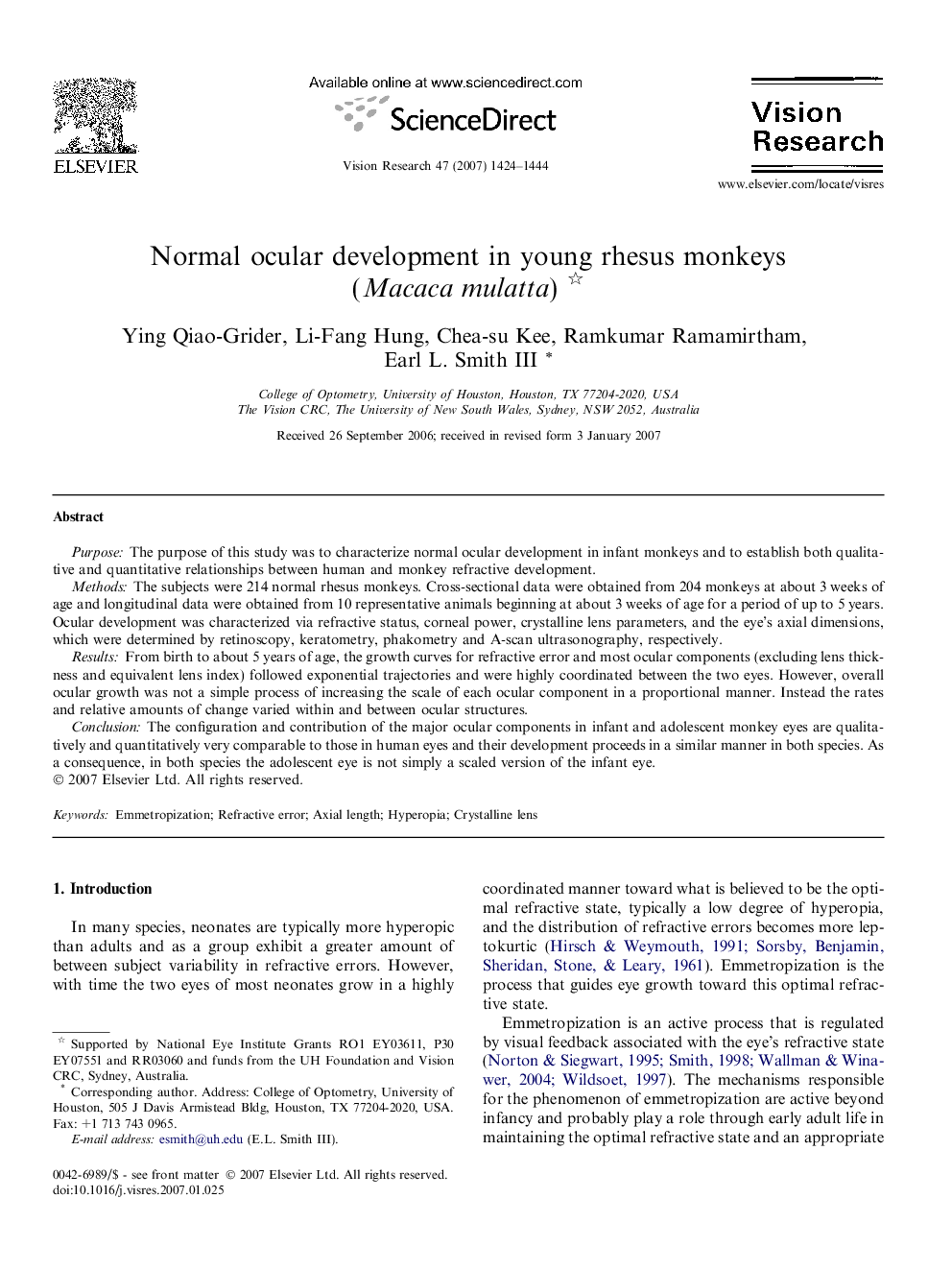| Article ID | Journal | Published Year | Pages | File Type |
|---|---|---|---|---|
| 4035705 | Vision Research | 2007 | 21 Pages |
PurposeThe purpose of this study was to characterize normal ocular development in infant monkeys and to establish both qualitative and quantitative relationships between human and monkey refractive development.MethodsThe subjects were 214 normal rhesus monkeys. Cross-sectional data were obtained from 204 monkeys at about 3 weeks of age and longitudinal data were obtained from 10 representative animals beginning at about 3 weeks of age for a period of up to 5 years. Ocular development was characterized via refractive status, corneal power, crystalline lens parameters, and the eye’s axial dimensions, which were determined by retinoscopy, keratometry, phakometry and A-scan ultrasonography, respectively.ResultsFrom birth to about 5 years of age, the growth curves for refractive error and most ocular components (excluding lens thickness and equivalent lens index) followed exponential trajectories and were highly coordinated between the two eyes. However, overall ocular growth was not a simple process of increasing the scale of each ocular component in a proportional manner. Instead the rates and relative amounts of change varied within and between ocular structures.ConclusionThe configuration and contribution of the major ocular components in infant and adolescent monkey eyes are qualitatively and quantitatively very comparable to those in human eyes and their development proceeds in a similar manner in both species. As a consequence, in both species the adolescent eye is not simply a scaled version of the infant eye.
